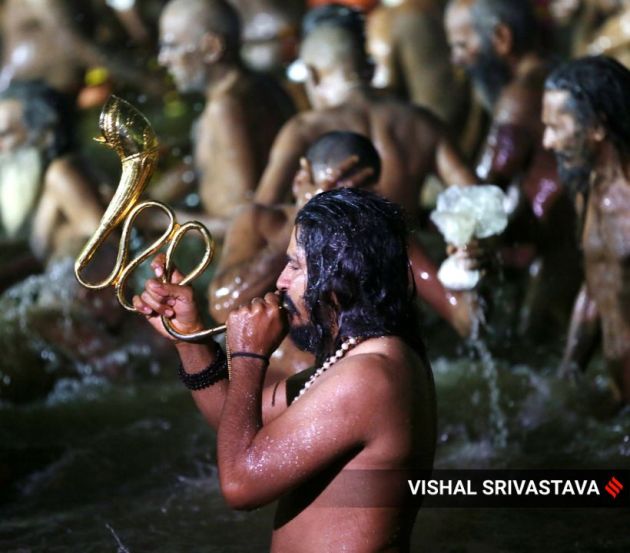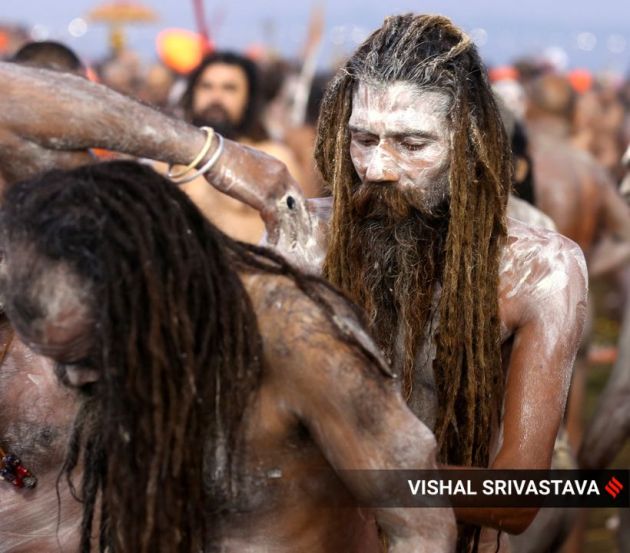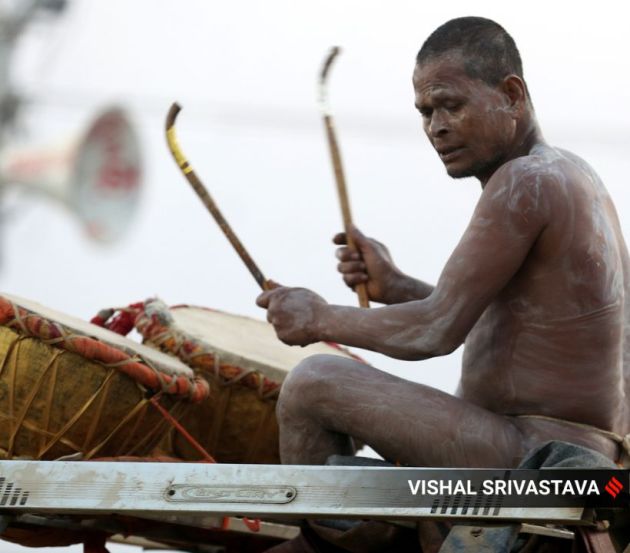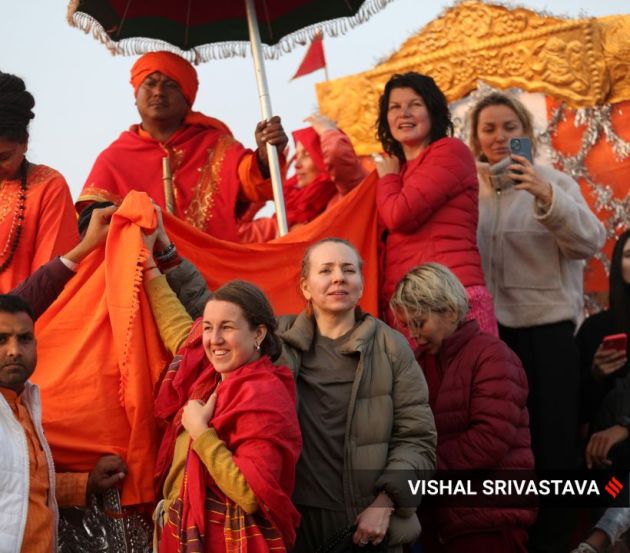In Pictures: Crores of people take ‘Amrit Snana’ at Maha Kumbh on Basant Panchami
As of February 3, over 340 million (34 crore) devotees have participated in the sacred bathing ritual since the commencement of the Maha Kumbh Mela on January 13, according to the Uttar Pradesh Information Department.
February 3, 2025 15:05 IST 1 / 19
1 / 19The last 'Amrit Snana' of Maha Kumbh takes place on Basant Panchami, the day marking beginning of the spring season. (Express Photo by Vishal Srivastava)
 2 / 19
2 / 19Panchayati Akhara Mahanirvani, Atal, Niranjani, Anand, Juna, Awahan, and Panchagin - sadhus from of these major Akharas accompanied the Mahamandaleshwars. (Express Photo by Vishal Srivastava)
 3 / 19
3 / 19It is believed that the Amrit Snana ritual cleanses sins of the devotees and liberates them from the cycle of rebirth. (Express Photo by Vishal Srivastava)
 4 / 19
4 / 19The Akharas left camps in Sector 20 at 4 am after crossing the Pontoon Bridge. (Express Photo by Vishal Srivastava)
 5 / 19
5 / 19Group of naga sadhus rode horses, accompanying the Mahamandaleshwars and their Akharas. (Express Photo by Vishal Srivastava)
 6 / 19
6 / 19About 20 quintals of flower petals were showered over the devotees from a helicopter. (Express Photo by Vishal Srivastava)
 7 / 19
7 / 19Officials informed that the snana of all 13 Akharas would be completed by 3 pm. (Express Photo by Vishal Srivastava)
 8 / 19
8 / 1962 lakh devotees had taken baths by 8 am, and the government expects 5 crore to take baths today. (Express Photo by Vishal Srivastava)
 9 / 19
9 / 19The Kumbh Mela is not just about the sacred bath, but also a time for devotees to immerse themselves in prayer, meditation, and spiritual gatherings. (Express Photo by Vishal Srivastava)
 10 / 19
10 / 19Pilgrims believe that taking their holy dip after the saints amplifies the benefits of their prayers due to the sanctity imparted by the saints’ presence. (Express Photo by Vishal Srivastava)
 11 / 19
11 / 19Mahakumbh drew devotees from across the world, including Russia, Spain, Brazil and South Africa. (Express Photo by Vishal Srivastava)
 12 / 19
12 / 19Mahakumbh is celebrated once every 144 years. The one-and-a-half-month festival will end on Shiv Ratri, which will take place on February 26. (Express Photo by Vishal Srivastava)
 13 / 19
13 / 19Pilgrims believe that taking their holy dip after the saints amplifies the benefits of their prayers due to the sanctity imparted by the saints’ presence, as per the official site of the Kumbh Mela. (Express Photo by Vishal Srivastava)
 14 / 19
14 / 19The Shahi Snan takes place on specific auspicious dates, starting from Makar Sankranti, marking the entry of the Sun into Capricorn. (Express Photo by Vishal Srivastava)
 15 / 19
15 / 19Devotees are advised to maintain physical and mental purity by refraining from negative thoughts and practicing austerity in the days leading up to the ritual. (Express Photo by Vishal Srivastava)
 16 / 19
16 / 19The Akharas lead the Shahi Snan with great pomp and discipline. Respecting their procession and not intruding is a crucial practice. (Express Photo by Vishal Srivastava)
 17 / 19
17 / 19The Uttar Pradesh government expects a footfall of around five crore pilgrims on Monday alone. (Express Photo by Vishal Srivastava)
 18 / 19
18 / 19As of February 3, over 340 million (34 crore) devotees have participated in the sacred bathing ritual since the commencement of the Maha Kumbh Mela on January 13, according to the Uttar Pradesh Information Department. (Express Photo by Vishal Srivastava)
 19 / 19
19 / 19The Kumbh Mela is not just about the sacred bath. It is also a time for devotees to immerse themselves in prayer, meditation, and spiritual gatherings.











